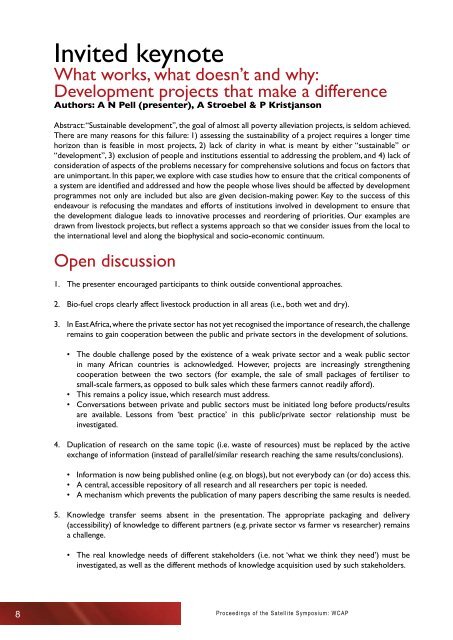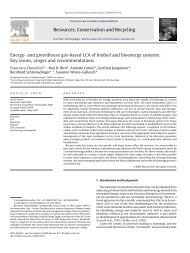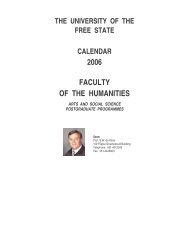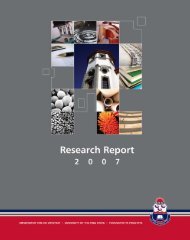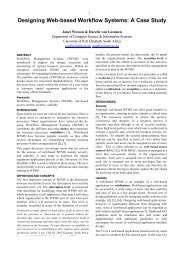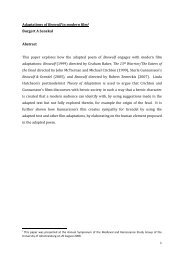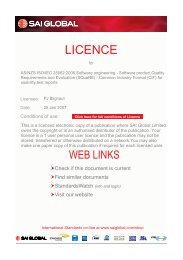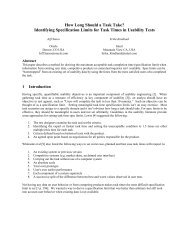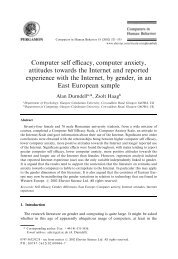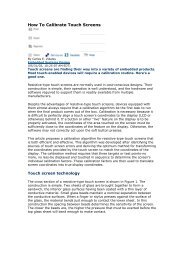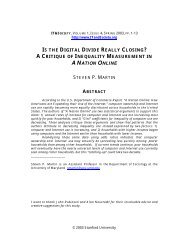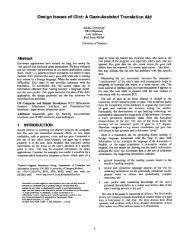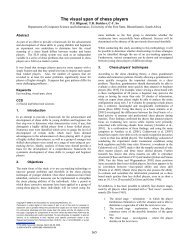the role of livestock in developing communities: enhancing ...
the role of livestock in developing communities: enhancing ...
the role of livestock in developing communities: enhancing ...
You also want an ePaper? Increase the reach of your titles
YUMPU automatically turns print PDFs into web optimized ePapers that Google loves.
Invited keynote<br />
What works, what doesn’t and why:<br />
Development projects that make a difference<br />
Authors: A N Pell (presenter), A Stroebel & P Kristjanson<br />
Abstract: “Susta<strong>in</strong>able development”, <strong>the</strong> goal <strong>of</strong> almost all poverty alleviation projects, is seldom achieved.<br />
There are many reasons for this failure: 1) assess<strong>in</strong>g <strong>the</strong> susta<strong>in</strong>ability <strong>of</strong> a project requires a longer time<br />
horizon than is feasible <strong>in</strong> most projects, 2) lack <strong>of</strong> clarity <strong>in</strong> what is meant by ei<strong>the</strong>r “susta<strong>in</strong>able” or<br />
“development”, 3) exclusion <strong>of</strong> people and <strong>in</strong>stitutions essential to address<strong>in</strong>g <strong>the</strong> problem, and 4) lack <strong>of</strong><br />
consideration <strong>of</strong> aspects <strong>of</strong> <strong>the</strong> problems necessary for comprehensive solutions and focus on factors that<br />
are unimportant. In this paper, we explore with case studies how to ensure that <strong>the</strong> critical components <strong>of</strong><br />
a system are identified and addressed and how <strong>the</strong> people whose lives should be affected by development<br />
programmes not only are <strong>in</strong>cluded but also are given decision-mak<strong>in</strong>g power. Key to <strong>the</strong> success <strong>of</strong> this<br />
endeavour is refocus<strong>in</strong>g <strong>the</strong> mandates and efforts <strong>of</strong> <strong>in</strong>stitutions <strong>in</strong>volved <strong>in</strong> development to ensure that<br />
<strong>the</strong> development dialogue leads to <strong>in</strong>novative processes and reorder<strong>in</strong>g <strong>of</strong> priorities. Our examples are<br />
drawn from <strong>livestock</strong> projects, but reflect a systems approach so that we consider issues from <strong>the</strong> local to<br />
<strong>the</strong> <strong>in</strong>ternational level and along <strong>the</strong> biophysical and socio-economic cont<strong>in</strong>uum.<br />
Open discussion<br />
1. The presenter encouraged participants to th<strong>in</strong>k outside conventional approaches.<br />
2. Bio-fuel crops clearly affect <strong>livestock</strong> production <strong>in</strong> all areas (i.e., both wet and dry).<br />
3. In East Africa, where <strong>the</strong> private sector has not yet recognised <strong>the</strong> importance <strong>of</strong> research, <strong>the</strong> challenge<br />
rema<strong>in</strong>s to ga<strong>in</strong> cooperation between <strong>the</strong> public and private sectors <strong>in</strong> <strong>the</strong> development <strong>of</strong> solutions.<br />
• The double challenge posed by <strong>the</strong> existence <strong>of</strong> a weak private sector and a weak public sector<br />
<strong>in</strong> many African countries is acknowledged. However, projects are <strong>in</strong>creas<strong>in</strong>gly streng<strong>the</strong>n<strong>in</strong>g<br />
cooperation between <strong>the</strong> two sectors (for example, <strong>the</strong> sale <strong>of</strong> small packages <strong>of</strong> fertiliser to<br />
small-scale farmers, as opposed to bulk sales which <strong>the</strong>se farmers cannot readily afford).<br />
• This rema<strong>in</strong>s a policy issue, which research must address.<br />
• Conversations between private and public sectors must be <strong>in</strong>itiated long before products/results<br />
are available. Lessons from ‘best practice’ <strong>in</strong> this public/private sector relationship must be<br />
<strong>in</strong>vestigated.<br />
4. Duplication <strong>of</strong> research on <strong>the</strong> same topic (i.e. waste <strong>of</strong> resources) must be replaced by <strong>the</strong> active<br />
exchange <strong>of</strong> <strong>in</strong>formation (<strong>in</strong>stead <strong>of</strong> parallel/similar research reach<strong>in</strong>g <strong>the</strong> same results/conclusions).<br />
• Information is now be<strong>in</strong>g published onl<strong>in</strong>e (e.g. on blogs), but not everybody can (or do) access this.<br />
• A central, accessible repository <strong>of</strong> all research and all researchers per topic is needed.<br />
• A mechanism which prevents <strong>the</strong> publication <strong>of</strong> many papers describ<strong>in</strong>g <strong>the</strong> same results is needed.<br />
5. Knowledge transfer seems absent <strong>in</strong> <strong>the</strong> presentation. The appropriate packag<strong>in</strong>g and delivery<br />
(accessibility) <strong>of</strong> knowledge to different partners (e.g. private sector vs farmer vs researcher) rema<strong>in</strong>s<br />
a challenge.<br />
• The real knowledge needs <strong>of</strong> different stakeholders (i.e. not ‘what we th<strong>in</strong>k <strong>the</strong>y need’) must be<br />
<strong>in</strong>vestigated, as well as <strong>the</strong> different methods <strong>of</strong> knowledge acquisition used by such stakeholders.<br />
8<br />
Proceed<strong>in</strong>gs <strong>of</strong> <strong>the</strong> Satellite Symposium: WCAP


